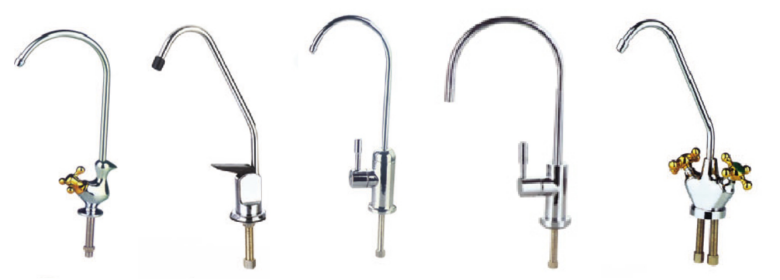When it comes to Reverse Osmosis (RO) water purifiers, most people focus on key filtration components like RO membranes and pre-filters. However, one often-overlooked yet essential part of the system is the RO faucet—the final point where purified water is dispensed for drinking and cooking.
A high-quality RO faucet does more than just deliver water; it ensures hygienic flow, prevents contamination, and enhances user experience. Using a low-quality or worn-out faucet can introduce unwanted impurities, affect water taste, and lead to leaks, reducing the overall efficiency of your RO system.
In this guide, we’ll explore why the RO faucet is important, the different types available, when to replace it, and how to choose the best option for your RO system. Whether you're installing a new purifier or upgrading your existing setup, selecting the right RO faucet can make a significant difference in water safety and convenience.
What is an RO Faucet and Why is It Important?
The RO faucet is the final stage of an RO system, dispensing purified water directly for drinking or cooking. While it may seem like a simple component, its quality, material, and design impact:
✔ Water purity – A poor-quality faucet may leach contaminants into your water.
✔ Durability – A good faucet ensures long-term reliability.
✔ Ease of use – Smooth water flow and leak-free operation enhance convenience.

Different Types of RO Faucets
There are several types of RO faucets, and choosing the right one depends on your system’s design and personal preferences.

Standard RO Faucet (Non-Air Gap)
✔ The most common RO faucet type.
✔ Has one water line connecting directly to the RO system.
✔ Simple installation and maintenance.
✔ Works with any RO system.
Air Gap RO Faucet
✔ Features three water lines instead of one.
✔ Prevents backflow contamination from sink drains into the RO system.
✔ Required by plumbing codes in some regions.
Best For: Areas with strict plumbing regulations to prevent cross-contamination.
Designer RO Faucet
✔ Sleek, modern designs to match kitchen aesthetics.
✔ Available in chrome, brushed nickel, matte black, and stainless steel.
✔ Premium materials ensure durability and hygiene.
Best For: Users who want an aesthetic upgrade for their kitchen.
Signs You Need to Replace Your RO Faucet
Even high-quality RO faucets wear out over time. Here are some signs that it’s time for a replacement:
Leaking or Dripping Faucet
✔ If the faucet drips continuously, it may have a worn-out valve.
✔ A leak around the base or handle suggests a failing seal.
Water Tastes Metallic or Off
✔ Older faucets made from inferior materials can leach metals or contaminants into your water.
✔ A plastic-like or metallic taste indicates it’s time for an upgrade to a high-quality faucet.
Rust, Corrosion, or Discoloration
✔ If your faucet has rust spots, discoloration, or buildup, it’s a sign of deterioration.
✔ A stainless steel or lead-free brass faucet is a better long-term investment.
Difficulty in Turning the Faucet On/Off
✔ If the handle feels stiff or doesn’t turn smoothly, internal components may be worn out.
If you experience any of these issues, replacing the faucet ensures optimal performance and water safety.
How to Choose the Best RO Faucet for Your System
When selecting an RO faucet, consider these key factors to ensure durability, safety, and ease of use.
Material: Stainless Steel vs. Plastic
✔ Stainless steel or lead-free brass faucets are more durable and safe than plastic.
✔ Plastic faucets can degrade over time and may leach chemicals into water.
Certification & Safety Standards
✔ Look for NSF-certified faucets to ensure compliance with water safety standards.
✔ Lead-free certification is crucial for preventing metal contamination.
Faucet Style & Compatibility
✔ Check if your RO system requires an air gap or standard faucet.
✔ Choose a design that matches your kitchen aesthetic.
If upgrading, ensure your new faucet fits the hole size in your sink.

Step-by-Step Guide to Replacing an RO Faucet
Installing a new RO faucet is a straightforward DIY process. Follow these steps:
Tools Needed:
✔ Adjustable wrench
✔ Plumber’s tape
✔ Screwdriver
✔ New RO faucet
Installation Steps:
Step 1: Turn Off the RO System
? Shut off the water supply and drain the storage tank.
Step 2: Remove the Old Faucet
? Disconnect the tubing and unscrew the mounting nut underneath the sink.
Step 3: Install the New Faucet
? Insert the new faucet into the sink hole.
? Secure it with the mounting nut and washer.
Step 4: Connect Tubing & Check for Leaks
? Attach the water line(s) and tighten all connections.
? Turn the water supply back on and check for leaks.
If replacing an air gap faucet, ensure all three water lines are connected correctly.
Benefits of Upgrading to a High-Quality RO Faucet
✔ Better Water Flow – Eliminates clogging issues and ensures smooth dispensing.
✔ Longer Lifespan – High-quality materials resist rust and corrosion.
✔ Healthier Drinking Water – Prevents leaching of contaminants.
✔ Aesthetic Improvement – Modern designs enhance kitchen appearance.
Investing in a premium RO faucet can significantly improve user experience and long-term water safety.
Upgrade Your RO Faucet for a Better Experience
The RO faucet is more than just a dispensing point—it’s the last step in ensuring safe and great-tasting drinking water. Choosing a durable, lead-free, and high-quality faucet enhances your RO system’s performance and extends its lifespan.
Key Takeaways:
✔ Standard RO faucets are simple and efficient, while air gap faucets prevent backflow contamination.
✔ Replace your RO faucet if it leaks, rusts, or affects water taste.
✔ Choose stainless steel or NSF-certified faucets for better durability and safety.
✔ A high-quality faucet enhances both functionality and kitchen aesthetics.
----------------------------------------------------------------------------------
SANAKY VIETNAM., CO LTD- Manufacturer of Power, Distribution and Dry-type Transformer as well as RO Water Purifier, Chest Freezer - Upright Cooler, ...
☎ Hotline: (+84) 986 484 544
? hank@sanaky-vn.com
? www.sanaky-vn.com
 Vietnamese
Vietnamese  English
English  Chinese
Chinese  French
French  Spanish
Spanish  Russian
Russian  Arabic
Arabic  Portuguese
Portuguese